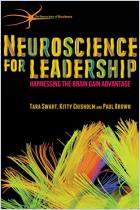
You! The Positive Force In Change
Leveraging Insights from Neuroscience and Positive Psychology
Recommendation
The human brain is wired to resist change. Leadership experts Eileen Rogers and Nick van Dam cite its reaction to change, the “fear factor,” as a root cause of organizational and personal failure. They advocate using a positive, evidence-based approach to management as an empathetic alternative to old-style authoritarianism. This strategy can help managers allay the fear of change that locks people in place and prevents them from considering important issues logically. The process of neuroplasticity helps the brain form the new connections people need to deal with novel situations, but it works best amid “mindful” calmness. A negative state of mind is contagious and breeds inflexibility, but positivity can help leaders and their employees handle change. Although the book refers to many touchstone findings in brief, and moves quickly on, the need to lead with optimism and emotional inclusion emerges as its main message. getAbstract suggests the authors’ insights and methods to progressive managers making the transition to a more consultative, “emotionally intelligent” approach to leading change.
Summary
About the Authors
Eileen Rogers is founder and CEO of the LeadershipSigma consultancy. Nick van Dam is McKinsey & Company’s global chief learning officer.


















Comment on this summary